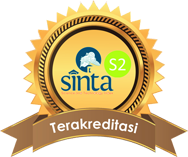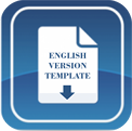Development of E-Worksheets on Reaction Rate Topics
DOI:
https://doi.org/10.15575/jtk.v7i2.9319Keywords:
Adobe Acrobat 11 pro, e-worksheet, information and communication technology (ICT), rate of reactionAbstract
Students need ICT-based teaching to understand chemistry containing abstract and macroscopic concepts. The study aims to develop electronic worksheets using the Adobe Acrobat 11 Pro application. The Plomp model was used to calculate the total percentage of data collected from expert validation sheets and response questionnaires for educators and students. The results showed that the average percentage score obtained by material and media experts was 88.92% and 90.99%, respectively, in the very valid category. The results of the responses of educators and students in the small-scale test obtained an average percentage score of 88.42% and 85.35%, respectively, with very good and very interesting categories. Based on the result, the electronic worksheets developed for the reaction rate material are feasible for the learning process.
References
Akbar, S., & Sriwiyana, H. (2010). Pengembangan kurikulum dan pembelajaran Ilmu Pengetahuan Sosial (IPS). Yogyakarta: Cipta Media.
Anggraina, R. (2019). Pengembangan bahan ajar e-LKPD berorientasi chemo-entrepreneurship pada materi laju reaksi dan faktor-faktor yang mempengaruhi untuk kelas XI MIA SMA Negeri 5 Kota Jambi [Unpublished Thesis]. Universitas Jambi. Retrieved from https://repository.unja.ac.id/7440/
Astuti, T. E. K. (2016). Buku sekolah elektronik berbasis multimedia sebagai sumber belajar untuk SMK kompetensi keahlian Teknik Komputer Jaringan [Unpublished Thesis]. Universitas Negeri Yogyakarta. Retrieved from https://eprints.uny.ac.id/42279/
Febriyanti, E., Dewi, F., & Afrida. (2017). Pengembangan e-LKPD berbasis problem solving pada materi kesetimbangan kimia di SMAN 2 Kota Jambi. Universitas Jambi. Retrieved from https://repository.unja.ac.id/2742/
Handhika, J. (2012). Efektivitas media pembelajaran IM3 ditinjau dari motivasi belajar. Jurnal Pendidikan IPA Indonesia, 1(2), 109–114. Retrieved from https://journal.unnes.ac.id/nju/index.php/jpii/article/view/2127
Haqsari, R. (2014). Pengembangan dan analisis e-LKPD (elektronik - lembar kerja peserta didik) berbasis multimedia pada materi mengoperasikan software spreadsheet [Unpublished Thesis]. Universitas Negeri Yogyakarta. Retrieved from https://eprints.uny.ac.id/11293/
Nurrita, T. (2018). Pengembangan Media Pembelajaran Untuk Meningkatkan Hasil Belajar Siswa. Jurnal Misykat Volume 3(1), 171-187. http://dx.doi.org/10.33511/misykat.v3n1.171
Plomp, T. (2013). Educational design research: An introduction. In T. Plomp & N. Nieveen (Eds.), Educational design research (10-51). Enschede: SLO. Retrieved from https://slo.nl/publish/pages/2904/educational-design-research-part-a.pdf
Rahayu , S. (2020). Pengembangan lembar kerja peserta didik (LKPD) berbasis budaya Jambi untuk mendukung kemampuan literasi matematis siswa kelas VIII SMP pada materi SPLDV [Unpublished Thesis]. Universitas Jambi. Retrieved from https://repository.unja.ac.id/10720/
Riduwan. (2012). Skala pengukuran variabel-variabel penelitian. Bandung: Alfabeta.
Rochmad. (2012). Desain model pengembangan perangkat pembelajaran matematika. Jurnal Kreano, 3(1), 59-72. Retrieved from https://journal.unnes.ac.id/nju/index.php/kreano/article/view/2613
Sadiman, A. S., Rahardjo, Haryono, A., & Harjito. (2011). Media pendidikan: Pengertian, pengembangan, dan pemanfaatannya. Depok: PT. Raja Grafindo Persada.
Siswoyo, D., Sulistyono, T., & Dardiri, A. (2013). Ilmu pendidikan. Yogyakarta: UNY Press.
Sugiyono. (2011). Metode penelitian pendidikan. Bandung: Alfabeta.
Syahputra, E. (2018). Pembelajaran abad 21 dan penerapannya di Indonesia. Prosiding Seminar Nasional SINASTEKMAPAN (E-Journal), 1276-1283. Retrieved from https://www.researchgate.net/publication/331638425_PEMBELAJARAN_ABAD_21_DAN_PENERAPANNYA_DI_INDONESIA
Tim Pengembang Ilmu Pendidikan FIP UPI. (2009). Ilmu dan aplikasi pendidikan. Bandung: Imperial Bhakti Utama.
Trianto. (2011). Model-model pembelajaran inovatif berorientasi konstruktivistik: Konsep, landasan teoritis-praktir dan implementasinya. Jakarta: Prestasi Pustaka. progresif&f=false
Tüysüz, C. (2010). The effect of The Virtual Laboratory on Students Achievement and Attitude in Chemistry. International Online Journal of Educational Sciences, 2(1), 37–53. Retrieved from https://iojes.net/index.jsp?mod=makale_tr_ozet&makale_id=41381
Downloads
Published
How to Cite
Issue
Section
Citation Check
License
Authors who publish with this journal agree to the following terms:
- Authors retain copyright and grant the journal right of first publication with the work simultaneously licensed under a Creative Commons Attribution-ShareAlike that allows others to share the work with an acknowledgement of the work's authorship and initial publication in this journal.
- Authors are able to enter into separate, additional contractual arrangements for the non-exclusive distribution of the journal's published version of the work (e.g., post it to an institutional repository or publish it in a book), with an acknowledgement of its initial publication in this journal.
- Authors are permitted and encouraged to post their work online (e.g., in institutional repositories or on their website) prior to and during the submission process, as it can lead to productive exchanges, as well as earlier and greater citation of published work (See The Effect of Open Access).








